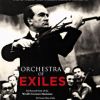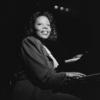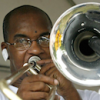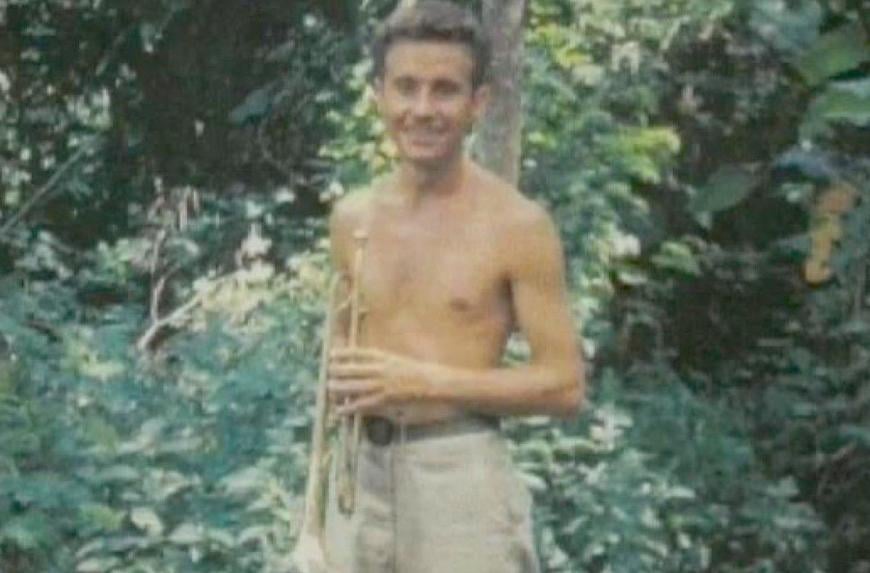
When it comes to military and economic might, the United States probably reached its zenith at the conclusion of World War II, when American hard power brought the Empire of Japan to its knees and turned the tide against Nazi Germany. But the U.S. military could be an equally effective force when it came to employing soft power, particularly the irresistible beat of jazz. With big bands at the forefront of American popular culture in the first half of the 1940s, the government didn’t need to pursue a top-down strategy. Merely meeting the entertainment needs of troops meant that military bands spread the gospel of swing far and wide.
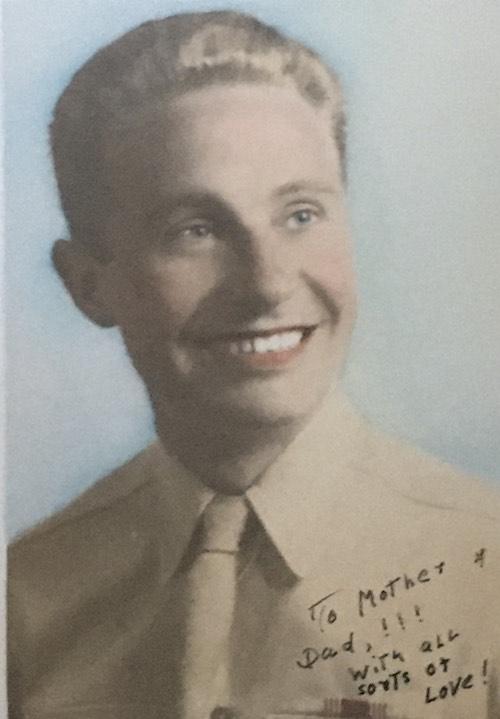
A rare and unprecedented glimpse at how those musicians looked and sounded comes courtesy of Jason Burt, a Sacramento-area middle-school history teacher who uncovered recordings made by his grandfather in 1946. The vivid time capsule from the Pacific theater arrives later this month with the release of Sentimental Journey, an album that includes 11 swing-era standards recorded by the 746th Far East Air Force Band featuring Richard Burt on lead trumpet. Made on a lark as a keepsake for the musicians and recorded on wire in a tent outside Manila, the album collects the only known recordings of a service band near a recent frontline.
Discovering the recordings, which his grandfather had transferred to 78s back in the states, wasn’t a total surprise. Growing up Burt was very close to his grandfather, who died in 2016, and he remembers hearing stories about the war years, when the 746th Far East Air Force Band helped buoy the spirits of young men and women far from home. After the war, he got a degree from Juilliard and settled in Northern California, teaching music in San Francisco and Sacramento public schools. Jason had heard a few pieces by the Air Force Band over the years, but it wasn’t until clearing out his grandparents’ house after his grandmother’s death in 2019 that he discovered a complete set of the original recordings.
“When we were growing up, I knew they existed,” Burt said. “In the 1980s he put two of the tracks on tape where he was the featured soloist, ‘Moonlight in Vermont’ and ‘Trumpet Rhapsody.’ But I never saw or heard the others. He never thought they were a big deal. But he took those two pieces and also recorded a 30-minute narration about his experience in the Philippines and how they made the recordings,” an oral history that’s included on Sentimental Journey, along with extensive historical liner notes.
Arranged by the band’s bassist, Joe Malazzo (who also shot film footage of Burt and his bandmates around the time of the recording), the 20-piece ensemble plays recent songs gleaned from the hit parade, such as “I’ll Remember April,” “Long Ago (And Far Away),” and “East of the Sun (and West of the Moon).” Almost every tune they played is still in the jazz repertory, which raises the question of how many songs released around 2021 will still be familiar to musicians in 2095. The crowd-pleasing repertoire wasn’t just for service members.
“They played for Philippine civilians too,” Burt said. “They had the distinction of being a frontline unit. Fighting broke out right behind the stage at a concert in Leyte. They were in the thick of it. But over in Manila they became the headquarters band for the Air Force. They played shows in town and shared the stage with Woody Herman’s and Benny Goodman’s orchestras.”
While World War II helped speed the internationalization of jazz, the music already had a strong following abroad, dating back to rise of jazz in the midst of the Great War. U.S. troops introduced the newly coalescing African-American idiom in Europe via the Harlem Hellfighters, the band that James Reese Europe assembled from the African American 369th regiment. It’s a legacy that pianist Jason Moran brought to the foreground several years ago with his multimedia production James Reese Europe and the Absence of Ruin, which celebrates the largely forgotten music of the bandleader, composer and arranger who designed the conceptual and organizational framework for the music that flowered in speakeasies, dance halls, and Broadway theaters during the Harlem Renaissance. The Old World was smitten with the rise of the new African-American culture, even if the admiration was sometimes leavened by a reductive perspective.
“The first wave of jazz was spread after World War I when there was a fascination with Blackness and all of kinds of things associated with passion and savageness and all of that,” said Bay Area jazz vocalist Kim Nalley, who just earned a Ph.D. in history from U.C. Berkeley with her dissertation “G.I. Jazz,” about the dual role of African-American jazz musicians as artists and occupiers in post-World War II Germany.
For the 746th Far East Air Force Band, much had changed since the days of the Harlem Hellfighters. By 1946, jazz had come to represent the promise of America, Nalley said. “It was considered somewhat respectable music and linked to democracy and the American way of life, and the U.S. started using jazz as a tool against totalitarianism,” she said. “Even though the armed forces were still segregated, I see lots of evidence of mixed bands. John Coltrane is playing in the Melody Makers in the Navy, but his job was as a cook. It portrayed American culture as a melting pot, and that mobility was very attractive in many countries, even if it’s a veneer of integration. And the U.S. government used that.”
Nowhere was the contradiction between jazz’s promise of freedom and U.S. foreign policy more nakedly on display than the Philippines. American music arrived in force at the end of the 19th century when the U.S. occupied the archipelago after the Spanish American War, which was promptly followed by a brutal U.S. campaign to put down a movement for Philippine independence. Military bands brought American music to the island nation, but it was the movement of musicians that ensconced jazz in Manila.
Bobadil, a Philippine version of vaudeville, easily accommodated Pinoy jazz, a hybrid style that emerged in the 1920s when pianist and bandleader Luis Borromeo returned from a long stay in the U.S. well-versed in the new American art form. Its popularity grew during the swing era, and in a fascinating example of the music’s power to embody a liberationist impulse, jazz became a vehicle for Philippine resistance to Japan’s occupation. Of course, Richard Burt and the 746th Far East Air Force Band didn’t know how much jazz helped Filipinos get through three years as part of the Greater East Asia Co-Prosperity Sphere. The lo-fi, scratchy, but entirely present music on Sentimental Journey speaks to the countervailing power of order and beauty in the face of war’s degradation.
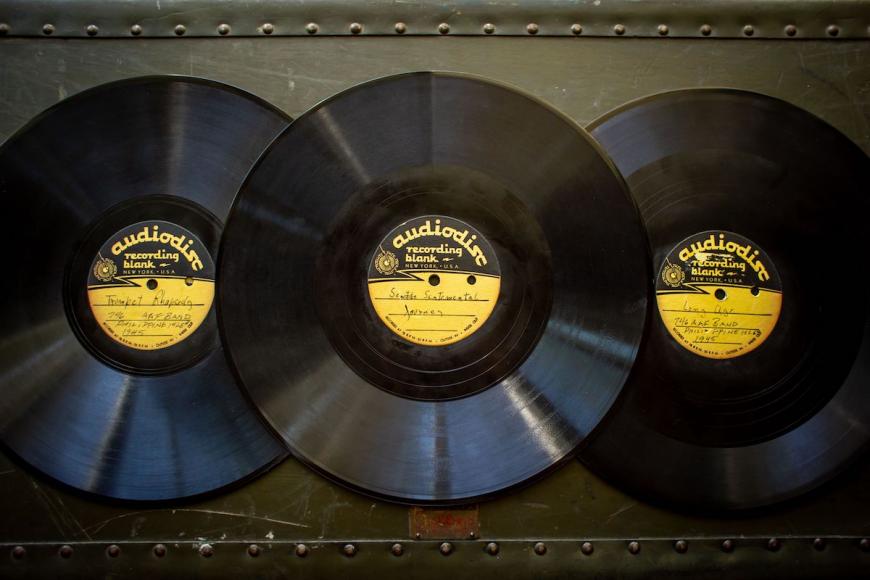
The music’s recovery after being transferred from the original wire recordings to various formats over the years required exacting efforts by Grammy Award winning sound engineers Reuben Cohen and Hiro Sanada. As a teacher who turned his passion for history into his profession, Jason Burt sees the album’s release as the first step in a larger project. He’s working on a book about the 746th Far East Air Force Band, and the recordings have found a place in his classroom.
“My students love it,” he said. “It’s a way for me to show them that history isn’t just stuff in a book. They love how it’s on Spotify. They can stream it.
“And the movie ‘Soul’ was really big when it came out. I found an album review of the soundtrack, and I gave an extra credit assignment where they had to read the Soul album review and listen to Sentimental Journey and write an album review.”


